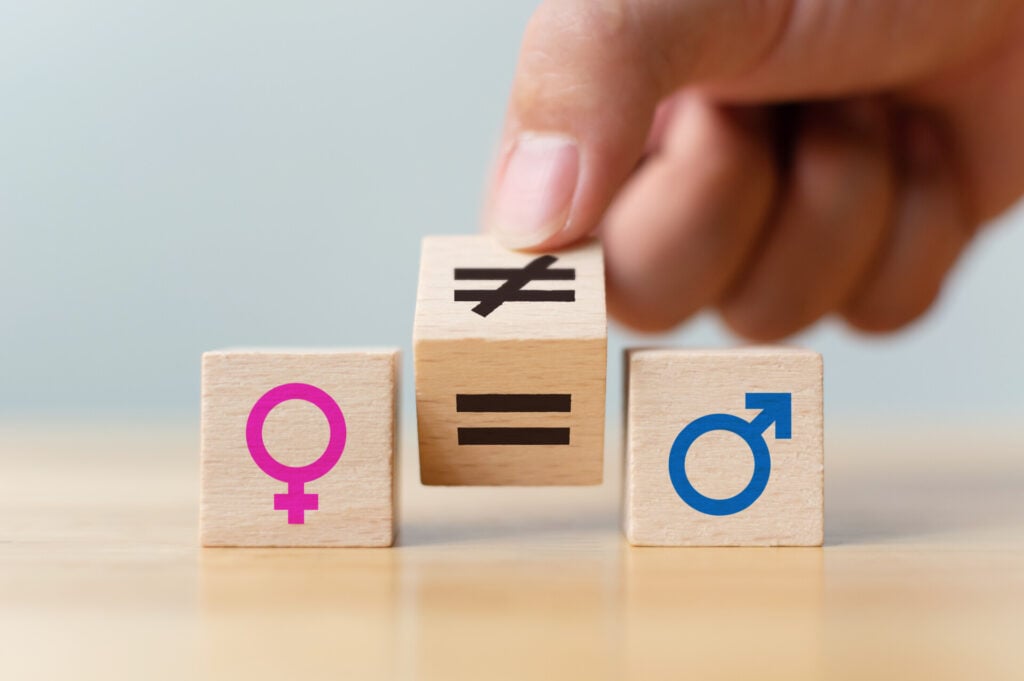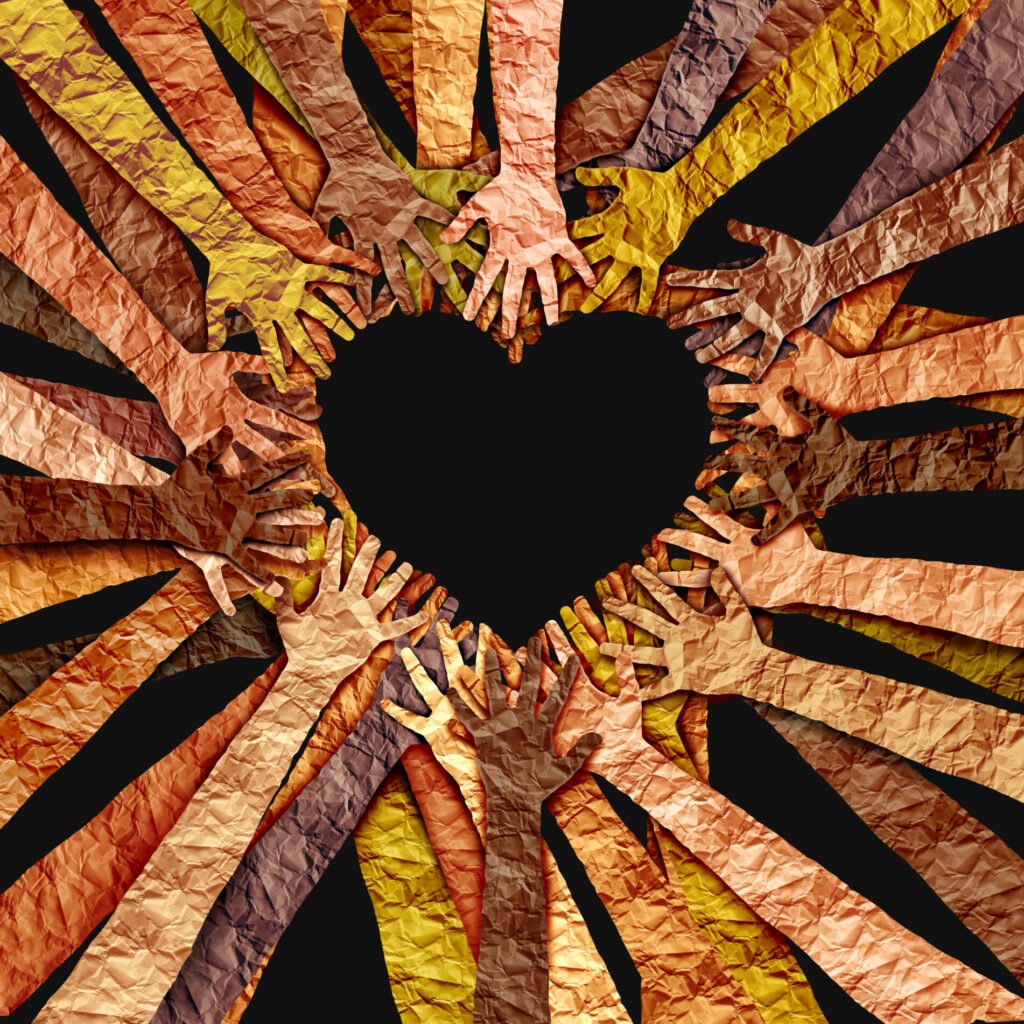On This Page:
Words of affirmation are traditionally thought to be the most common among the five love languages and reflect people who feel fulfilled and loved by someone’s expression of positive emotions (Chapman & Chapman, 2010).
However, more recent data from the dating app “Hinge” have identified quality time as the most common love language among its users, with words of affirmation coming in second (Emery, 2018). The two seem to fluctuate for the most common, depending on the source of information.

The theory of 5 Love Languages was proposed by Gary Chapman in 1992. Chapman, who worked as a counselor, found that couples were not feeling loved despite their partners believing they were doing all the right things for them.
He found that patterns emerged in what his clients wanted from their partners. Five consistent patterns were found, which then became what he termed the 5 Love Languages.
These are ‘words of affirmation’, ‘quality time’, ‘physical touch’, ‘acts of service’, and ‘receiving gifts.’
What is the most uncommon love language?
Receiving gifts is thought to be the most uncommon among the five love languages and reflects people who feel fulfilled and loved through receiving presents (Chapman & Chapman, 2010).
Recent data seems to generally agree with this notion, as receiving gifts was the least Google-searched love language, amongst the five, in the USA (Gionet, 2023).
Are there gender differences?

Love languages as a concept and framework are not gender-specific (Chapman & Campbell, 2008). This means that there are no love languages exclusively for women or just for men.
Any gender can have any out of the five as their preferred way of showing and receiving love.
In terms of similarities or differences between genders, for the most part, the majority of people seem to share similar thoughts when it comes to their most popular love languages.
Overall, quality time seems to be the most important love language across the board for both women and men, as seen in the research conducted by Bland and McQueen (2018).
These findings seem to be in alignment with the study conducted by the dating app “Hinge” that we referenced previously as well.
Thus, the emotional connection people feel when being together and focusing on each other seems to be an important relationship requirement for the majority.
Similarly, from the same resources, the second most popular love language, when breaking it down by gender, was typically words of affirmation for both women and men.
Hearing a partner’s positive thoughts and emotions towards you seems to be of high importance for most people in romantic relationships. Thus, consistent and genuine communication may be key to feeling secure and validated.
Are there any love language differences between hetero and homosexual relationships?
Inherently, the concept of love languages is person-specific regardless of someone’s sexual orientation. Everyone can have any of the five love languages as their preferred way of showing and receiving love.
However, it would seem that the central framework was largely based on heterosexual relationships with less guidance on how queer relationships can take this idea and adapt it.
Certain love languages, such as physical touch for homosexual relationships, may be restricted in certain societies, for example. This could be due to censorship, lack of openness, and overall oppression over queer ideologies.
Thus, couples may not feel safe openly expressing physical affection to their partners in public settings, which can lead to a suppression of their needs for love this way.
Therefore, while we can draw some generalized assumptions based on available data trends, there is a lack of significant research volume to definitively reach any concrete conclusions for either hetero or homosexual relationships.
This is further exacerbated when looking at the global stage. Cultural, religious, and societal norm differences exist across the continents, offering several significant variables that need to be accounted for.
What is the most common love language for teens?
The teenage years are some of the most defining of one’s life. Love languages as a framework can, of course, be applicable during this decade and assist in facilitating more meaningful connections.
The most common love language for teens, based on Dr. Chapman, is quality time, followed closely by words of affirmation and physical touch. Gift-giving and acts of service are the two most uncommon love languages for teens.

On the macroscale, these results are not too dissimilar with adults. However, it is worth reflecting on the microscale as well when it comes to teenage love languages.
Going underneath the surface and looking at the “why” behind what drives these needs can provide a better understanding of teenage displays and preferences when it comes to receiving and showing love.
During the teenage years, self-awareness is a big concept being developed, alongside the quest of finding independence and figuring out one’s identity.
Several physical and mental changes are happening, with bodily, hormonal, and emotional fluctuations often transpiring simultaneously.
The emergence of sexuality and how they are perceived by the opposite sex begins to also heighten, while questions about what the future entails and how their values and morals align with their belief system are also becoming more present.
Due to all of these changes, someone’s love language during their teenage years can be different than their preferred love language as an adult.
Extreme changes are more unlikely, e.g., if gift-giving is very low on their preferred list, it is rather uncommon for it to become their primary one. Typically, fluctuations happen between their first and second most important love language.
However, with age, experience, and new people coming into their lives as they age, some changes may be noticed.
How can you show love to your teenager as a parent?
As a parent, it is important to display your love and affection towards your teenager in a manner they will best receive and understand.
Here are a few lists of example actions you can incorporate in your relationship with your teen, broken down by love language.
Quality Time
- Make time for regular catch-ups and meaningful conversations
- When they come to you for advice or if they need to talk to you, actively listen and limit distractions
- Organize fun family activities
Words of Affirmation
- Remember to praise them for any accomplishments, achievements and reward their efforts
- Use encouraging words and gently support them in their journey of self-discovery
- Compliment their character and reminder them frequently of your love and affection
Physical Touch
- Frequently provide them with hugs and gentle, affectionate kisses, e.g., on their head or cheek
- Be there for them and offer a warm embrace when they are going through difficult moments
- Maintain close physical proximity when doing activities together and avoid being too distant and detached
- It is important with physical touch to ensure boundaries are communicated and consent is obtained before enforcing this love language.
Acts of Service
- Offer to assist them with any schoolwork
- Remember what their favorite meals or desserts are and cook/bake them for them
- Help maintain tidiness and cleanliness around the house, especially around peak stress periods like exam season
Gift Giving
- Go the extra mile and pick a personalized gift around holidays or birthdays instead of something more generic like a gift card
- Surprise them with small presents here and there that showcase you were thinking of them, e.g., buying them their favorite snack when you are running errands
- Leave cute or heartfelt letters/post-it notes for them to find
Can someone have all five love languages?

It is possible for someone to show and receive love using all five love languages; however, there are levels of prioritized importance in terms of what resonates with someone the most.
Specifically, Dr. Chapman has argued that each person has a primary love language, which is the main way they prefer to show and receive love. It is rather common, though, for people to have at least two main love languages that make up their portfolio of desired actions.
Love languages are a fluid concept so some fluctuation in preferences is not unusual. That being said, someone having all five of the love languages as a primary preference and “an absolute must” in their relationship interactions would be rather unusual and unlikely.
It may help to think about it by drawing a parallel to actual languages. Everyone has a native language, and oftentimes a second one, but they can still know and appreciate a few words from other languages as well.
Similarly then, many can be “fluent” in all five love languages but still have a preference and feel the most comfortable expressing themselves in one or two.
It is important to highlight that people may have different love language preferences depending on the type of relationship.
For example, in romantic relationships, someone may value physical affection and have that as their primary love language but for family relationships, quality time may be their go-to way.
Furthermore, someone may have the same love language across different types of relationships but may prefer different actions depending on the situation.
For example, going back to physical touch, kisses, and affectionate caresses may be preferred when interacting with your partner, but from your friends, hugs and gentle pats on the shoulders are more desirable.
Thus, preferences can vary even within a specific love language depending on the environment, comfort levels, and how acquainted people are with each other.
Lastly, depending on the life stage you are in, your desired ways of connecting with people in this way can fluctuate.
By maintaining open communication with your loved ones about your needs and also theirs, you can both meet in the middle and facilitate a stronger, healthier, and overall more fulfilling relationship bond.
Frequently asked questions
How can you find out what your love language is?
One of the easiest ways to determine your primary love language is by taking the free quiz developed by Dr. Chapman himself (available on the five love language website). It will ask you a series of questions to help you reflect on your preferences and what is most meaningful to you.
Additionally, many people unconsciously use their preferred love language to showcase their emotions to someone, as that is how expressing care comes the most naturally to them.
So it might be worth reflecting on your actions towards others as it may give you a clue into your own love language preferences.
For a read more about each love language, please see our relevant articles here.
Which is the easiest love language to express?
The easiest love language to express will generally tend to vary between people and population groups.
An argument could be made that words of affirmation and quality time can be more accessible for most when compared to, e.g., gift-giving, for example. However, there is no “one size fits all” when it comes to matters of accepting and sharing love.
Everyone has their own likes and dislikes, and what might be more natural for one can be rather difficult for another.
For example, someone may naturally be a physically affectionate person but someone else may have grown up in an environment or culture where physical contact is not a common way to display affection.
Is it possible to change your love language?
It is indeed possible to change your love language. None of the love languages are gender or age-specific, so anyone can have a preference or disinclination for them, which can also change over time as it is not a rigid concept (Chapman & Campbell, 2008).
That being said, most people tend to remain constant in terms of their preferred ways of receiving love and affection throughout their life, especially when it comes to their primary love language.
Through varied experiences, though, shifts can happen e.g having a more physically affectionate partner might make you appreciate acts of physical care more than before.
References
Bland, A. M., & McQueen, K. S. (2018). The distribution of Chapman’s love languages in couples: An exploratory cluster analysis. Couple and Family Psychology: Research and Practice, 7(2), 103.
Chapman, G. D., & Fabry, C. (2000). The five love languages of teenagers. Northfield Pub.
Chapman, G.D., & Campbell, R. (2008). The five love languages of children. Moody Pub.
Chapman, G. D., & Chapman, G. (2010). The five love languages: The secret to love that lasts. Northfield Pub.
Gionet, A. (2023, March 21). The Most Popular Love Languages Across the United States. The Loupe.
Emery, L. R. (2018, November 15). This Is The Most Popular Love Language On Hinge. Bustle.


